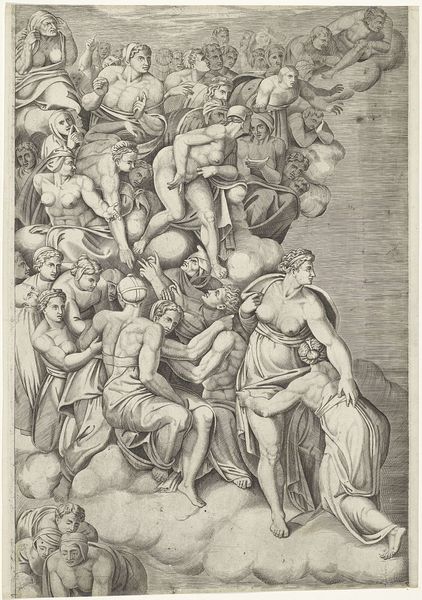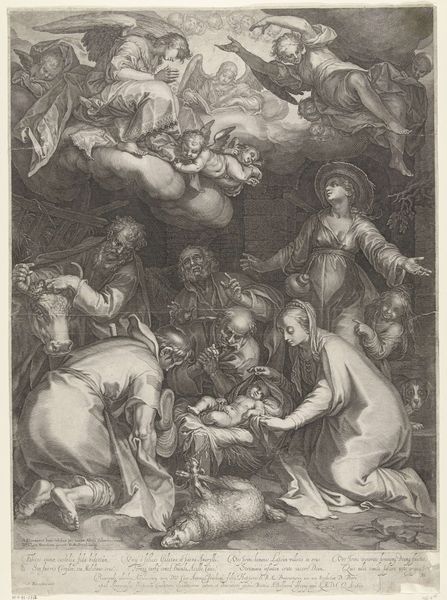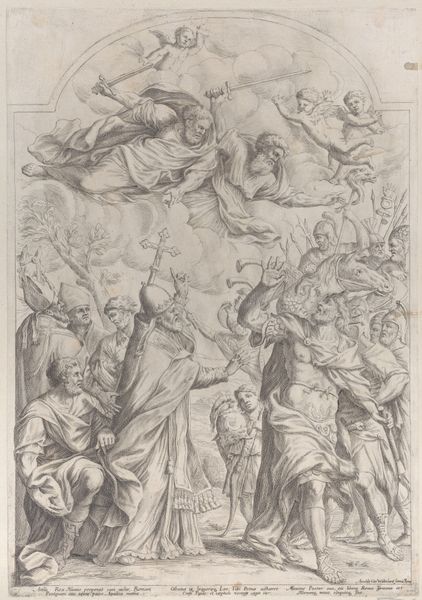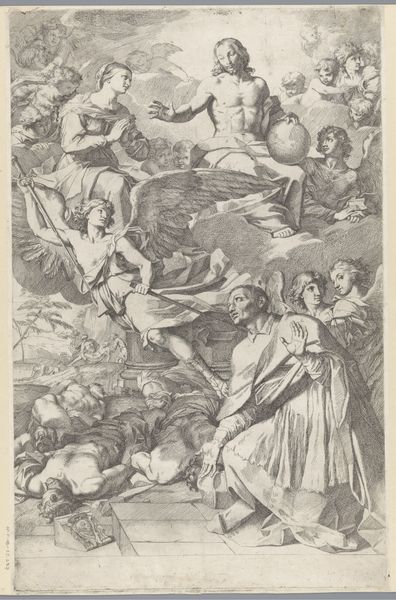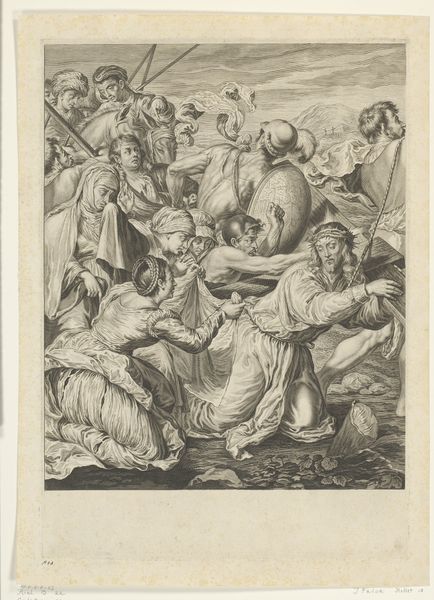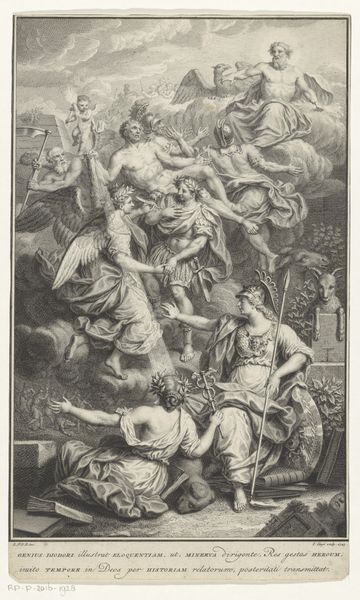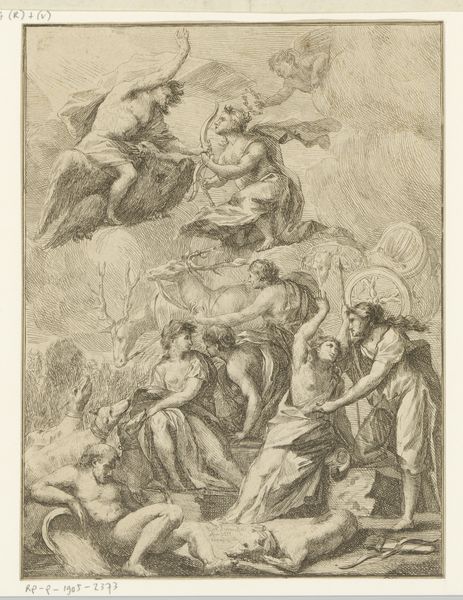
Maria, Jozef en Antonius van Padua als voorspraak voor zielen in het vagevuur c. 1694
0:00
0:00
pietroantoniodepietri
Rijksmuseum
etching
#
portrait
#
pencil drawn
#
baroque
#
etching
#
figuration
#
portrait drawing
#
history-painting
Dimensions: height 390 mm, width 253 mm
Copyright: Rijks Museum: Open Domain
Curator: Here at the Rijksmuseum, we have Pietro Antonio de' Pietri's etching from around 1694, entitled "Maria, Jozef en Antonius van Padua als voorspraak voor zielen in het vagevuur," or "Mary, Joseph and Anthony of Padua as advocates for souls in purgatory." Editor: What strikes me immediately is its dramatic verticality. The artist's use of etching emphasizes the gradation from the divine above to the desperate reaching below. Curator: Precisely! The composition is carefully structured, with a clear hierarchy. At the apex we see the celestial figures. Their serene poses contrast sharply with the writhing bodies in the lower register. The interplay of light and shadow enhances the emotional intensity of the scene. Editor: Considering Pietri's era, this work feels very engaged with the physical. The process of etching, line by line, brings a remarkable sense of the body. And, considering the market for devotional prints at the time, it really speaks to the accessibility of these images, the role of these figures within ordinary life, death, and the hopes of salvation. Curator: I agree, and it is an important insight. Semiotically, the figures carry significant symbolic weight, Mary and the saints representing divine mercy, the ladder illustrating that these souls can escape through penance. Note also how the figures in purgatory direct their gaze upwards, seeking divine intercession, using gesture and bodily extension as vehicles for meaning. Editor: Looking closely at the material and process also highlights the human aspect—each line etched into the plate by hand. It isn't detached—but part of a network of production, from the artist to the publisher and then to a public deeply involved with faith, afterlife, and salvation. Curator: Very well said. By paying close attention to the forms, their arrangement, and the relationships they form, we can reach a deeper appreciation of de' Pietri's masterful design. Editor: Absolutely. Examining the tangible aspects reminds us of its origins, of faith, hope, but also work, markets, and collective expectations about living, dying, and salvation.
Comments
No comments
Be the first to comment and join the conversation on the ultimate creative platform.
